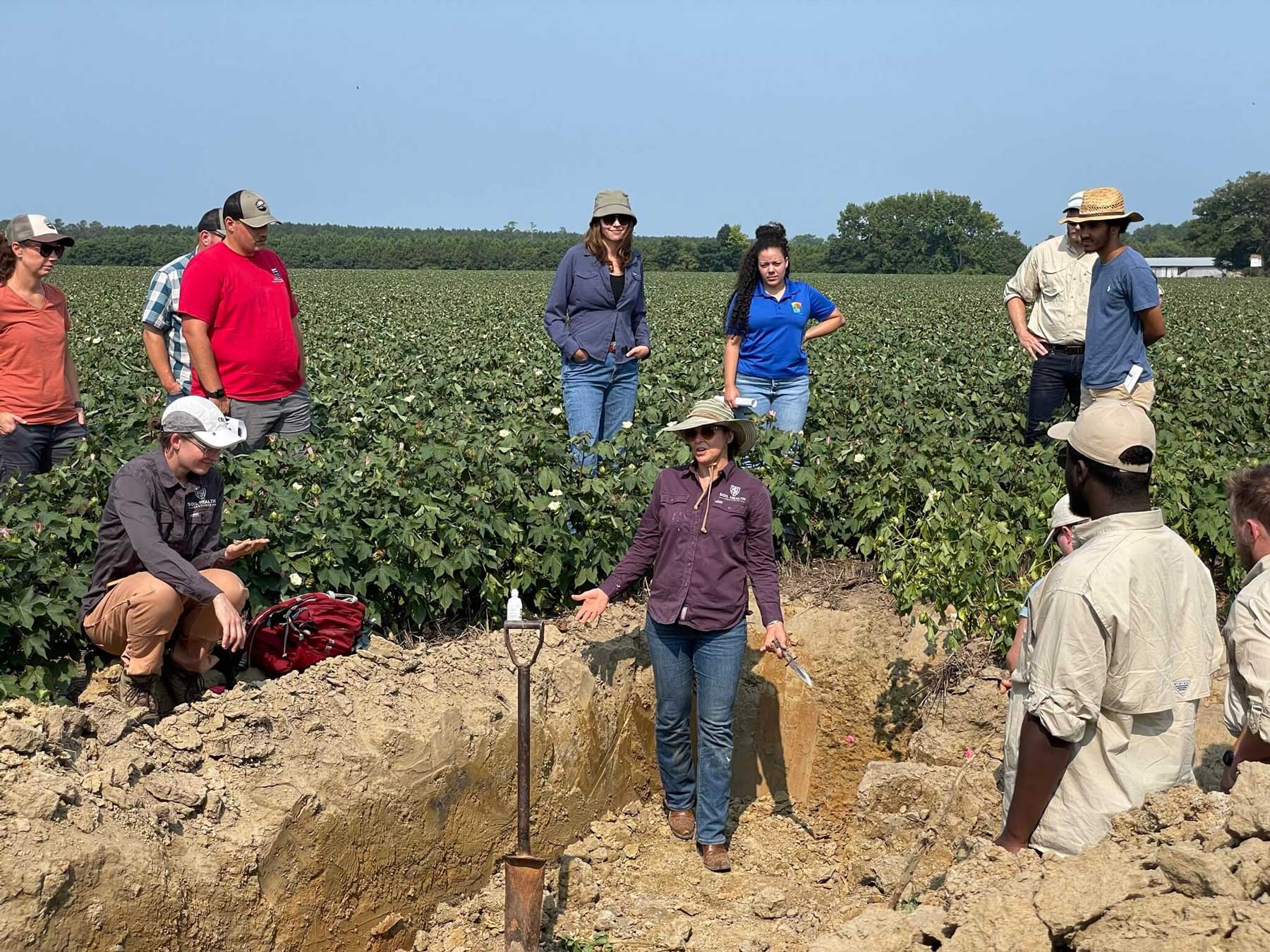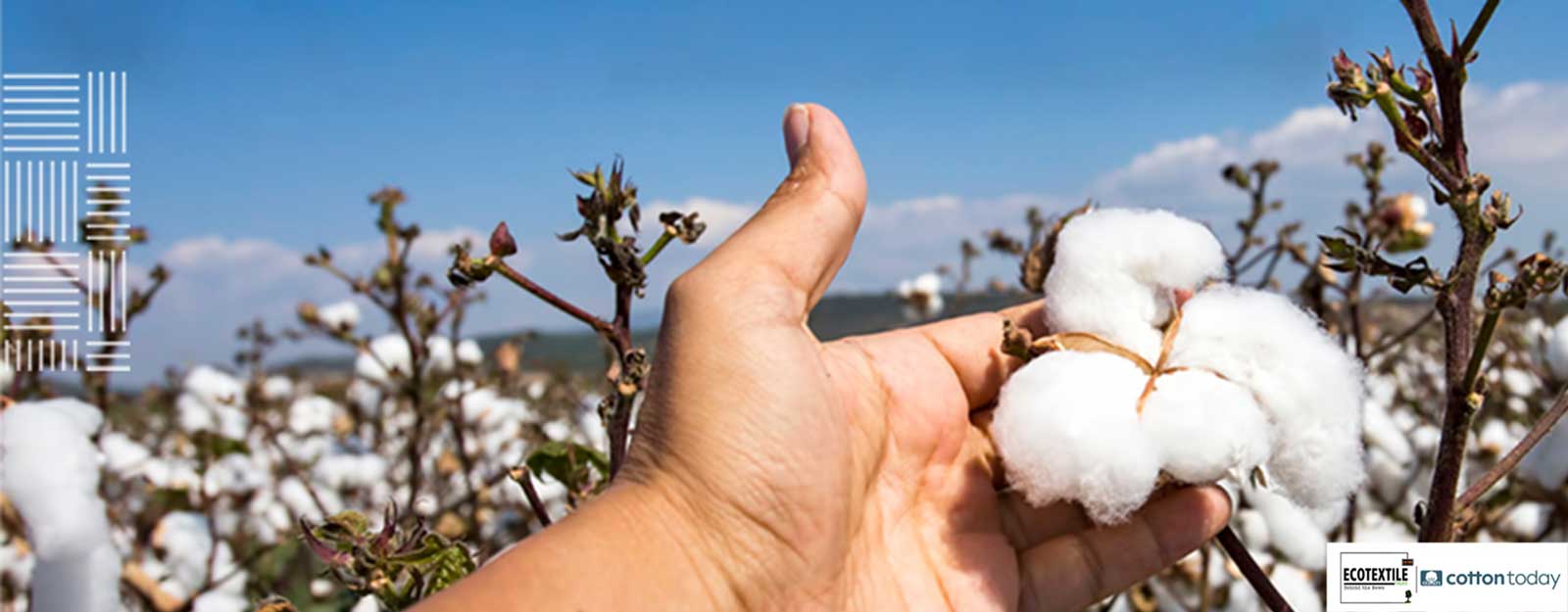- Regenerative Agriculture is an approach to farming and land management that focuses on restoring and improving the health of ecosystems, soil, and biodiversity while also enhancing agricultural productivity. It is a holistic and sustainable farming practice that seeks to work in harmony with nature rather than against it.
- One Size Does Not Fit All: Regenerative agriculture can vary in its geographical suitability and effectiveness depending on a range of factors, including climate, soil type, and local ecosystem conditions. The cotton belt in the United States covers a wide range of climates, from humid and subtropical regions to semi-arid and arid areas.
- Challenges and Opportunities: While the benefits are substantial, successfully adopting regenerative practices requires a profound shift in farming systems and mindsets. To overcome these obstacles, it is necessary to combine education, resources, and market incentives to support our farmers. Initiatives like the USDA Climate Smart Cotton Program and the Regenerative Cotton Fund are stepping forward to support adopting regenerative agriculture practices.
- Social and Economic Benefits for Cotton Growers: By adopting regenerative practices, growers may increase their profitability and build resilience against climate shocks. Additionally, they can enhance soil health, increase organic matter content, and promote biodiversity, ensuring that the soil remains fertile and productive for future generations.
Regenerative agriculture is an approach to farming and land management that focuses on restoring and improving the health of ecosystems, soil, and biodiversity while also enhancing agricultural productivity. It is a holistic and sustainable farming practice that seeks to work in harmony with nature rather than against it.
According to Field to Market, the principles of a regenerative agriculture system are based in Indigenous ways of land management and are adaptive to local physical conditions and culture.
These principles include:
- Minimizing soil disturbance
- Maintaining living roots in soil
- Continuously covering bare soil
- Maximizing diversity with emphasis on crops, soil microbes and pollinators
- Integrating livestock where it is feasible
While regenerative practices are not new, the term “regenerative agriculture” started gaining popularity in the late 20th century as farmers and agricultural researchers began to articulate a more holistic approach to farming. The focus was on regenerating soil health, biodiversity, and ecosystem functions.
In recent years, regenerative agriculture has gained significant attention as a response to concerns about soil degradation, climate change, and the sustainability of conventional agriculture. It has become a unifying concept for a wide range of practices and principles that aim to restore and regenerate agricultural ecosystems.
Cotton Incorporated is committed to the idea that regenerative agriculture practices hold a key to a more sustainable future. These practices not only benefit cotton growers but also have far-reaching positive effects on the environment and the industry. In this article, we will explore the power of regenerative agriculture and how it’s driving positive change in the cotton industry.
The Crucial Role of Soil Health
Soil health is not just a key component; it’s arguably the primary component in the journey toward successful regenerative agriculture. One of the most immediate benefits of improved soil health is the enhanced efficiency of nutrient cycling. As we increase organic matter in the soil, we provide a rich source of nutrients for our crops. This means healthier plants, increased yields, and reduced reliance on fertilizers.

The world beneath our feet is teeming with life, and we’re only beginning to understand the intricate web of soil microbes. Improved soil health fosters the growth of these tiny but mighty organisms. While the specifics of their role are still being unraveled, we do know that they contribute to overall soil vitality. They are expected to enhance crop health and resilience, providing protection against pests and diseases.
Few practices have garnered as much attention and praise in regenerative agriculture and soil health as no-tillage and cover cropping. They offer many benefits, from preventing soil erosion to suppressing weeds and providing a natural source of nutrients. However, their role in sequestering carbon and improving soil health has been a topic of growing interest, especially in the context of climate change mitigation.
While numerous studies have highlighted the benefits of cover cropping, comprehensive regional-scale research on their impact, especially over the long term, has been limited. One recent study conducted across 19 agricultural research sites in North America examined the influence of cover cropping on soil health indicators, with data spanning from 1896 to 2014.
Researchers armed themselves with a treasure trove of data, including site-specific environmental conditions and management practices. Their goal was to identify and prioritize the factors that contribute to soil organic carbon (SOC) stocks when cover crops are in the picture. To do this, they employed sophisticated tools like the Boruta algorithm and structural equation modeling.
The results of the study were nothing short of remarkable. Cover crops emerged as champions of soil health, significantly enhancing various indicators, including:
- A substantial increase in SOC concentration and stock (+8% and +7% respectively).
- An 8% boost in total nitrogen.
- A 15% rise in water-stable aggregates.
- A remarkable 34% increase in potential carbon mineralization.
- On average, cover crops sequestered a noteworthy 3.55 Mg C ha-1 of SOC at a depth of 0-15 cm, with an annual sequestration rate of 0.24 Mg C ha-1 yr-1. These findings underscore the pivotal role of cover crops in mitigating climate change by locking away carbon in the soil.
One Size Does Not Fit All
Regenerative agriculture can vary in its geographical suitability and effectiveness depending on a range of factors, including climate, soil type, and local ecosystem conditions. The cotton belt in the United States covers a wide range of climates, from humid and subtropical regions to semi-arid and arid areas.
For example, there are areas within the cotton belt where the use of cover crops can be bound by limited rainfall. Providing enough water can be challenging in regions with limited water resources or during drought conditions. Efficient water management practices and innovative irrigation techniques are essential in such situations to support the growth of cover crops.
Soil composition varies greatly from region to region, affecting specific regenerative practices’ suitability. Some methods may be more effective in improving soil health and fertility in certain soil types than others. The surrounding ecosystem, including native flora and fauna, can also influence the implementation of regenerative agriculture. Practices should be adapted to protect and support local biodiversity.
The size and topography of the land can also impact the feasibility of regenerative agriculture practices. Terracing, contour farming, and other techniques may be necessary in hilly or sloped areas. The success of regenerative agriculture often depends on local farmers’ and agricultural experts’ knowledge and expertise. Tailoring regenerative practices to local conditions requires understanding the specific challenges and opportunities.
Challenges and Opportunities
As we delve deeper into regenerative agriculture, we must acknowledge the challenges the cotton industry faces on this transformative journey. While the benefits are substantial, successfully adopting regenerative practices requires a profound shift in farming systems and mindsets. To overcome these obstacles, it is necessary to combine education, resources, and market incentives to support our farmers.
One of the initial hurdles growers may encounter when transitioning to regenerative agriculture is the cost of cover crop seeds. Some regenerative practices call for specific cover crops or plants that may be more expensive than traditional species. While this can pose a financial challenge, it’s helpful to consider that investing in these seeds can be a crucial step toward a more sustainable future.
Organic soil amendments like compost and manure can be vital for building soil health and fertility in regenerative systems. However, farmers may face challenges accessing these materials due to availability or transportation costs.
One of the primary challenges to adoption is the limited understanding of the short and long term risks and rewards associated with regenerative agriculture practices. Additionally, the lack of local information and resources makes it challenging for farmers to navigate the implementation process. Education and knowledge-sharing platforms are valuable in addressing this challenge.
Some regenerative practices may require upfront investments in equipment or training, which can be financially burdensome, especially for small-scale operations. The industry must explore ways to make these practices more accessible and affordable for all farmers through cost-share, grants, or cooperative initiatives.
Transitioning to regenerative agriculture may involve more risk, particularly in the short term, because farmers need to learn new techniques and identify crops that work best for their farms and ecosystems. Sharing experiences and best practices within the agricultural community can help mitigate these risks. Many universities and USDA staff are well suited to help growers with the complex decisions associated with converting to regenerative practices.
Implementing regenerative farming practices may face resistance for various reasons, including landlords who oppose change on the farm and may have limited familiarity with regenerative practices and their benefits. Collaboration between farmers, landlords, and industry stakeholders can facilitate the adoption of regenerative practices.
Recognizing these challenges, initiatives like the USDA Climate Smart Cotton Program and the Regenerative Cotton Fund are stepping forward to support adopting regenerative agriculture practices. These programs provide education, financial support, market incentives, and collaborative networks—all of which help ease the transition process for growers.
Social and Economic Benefits for Cotton Growers

For multi-generational cotton farms in the United States, preserving the long-term health and productivity of the land is of utmost importance. By adopting regenerative agriculture practices, such as enhancing soil health, increasing organic matter content, and promoting biodiversity, farmers ensure that the soil remains fertile and productive for future generations.
Pioneering a Sustainable Future in Cotton Production
As we look to the future, the path of regenerative agriculture in cotton production holds great potential. It represents a sustainable revolution that embraces learnings from the past while harnessing the present innovations. By nurturing soil health, reducing chemical inputs, and enhancing biodiversity, regenerative agriculture is not just a farming method; it’s a promise of resilience and sustainability.
The future of cotton production lies in the hands of growers, consumers, and industry leaders who understand the profound impact of regenerative practices. It’s a future where cotton fields thrive as vibrant ecosystems, soil health becomes a priority, and sustainable choices lead to a brighter and more sustainable tomorrow.
Together, we can continue to support regenerative agriculture, pioneering a sustainable future for cotton production that benefits farmers, the environment, and all of us who wear and appreciate this remarkable natural fiber. It’s a journey worth embarking upon, a promise worth keeping, and a future worth nurturing.




